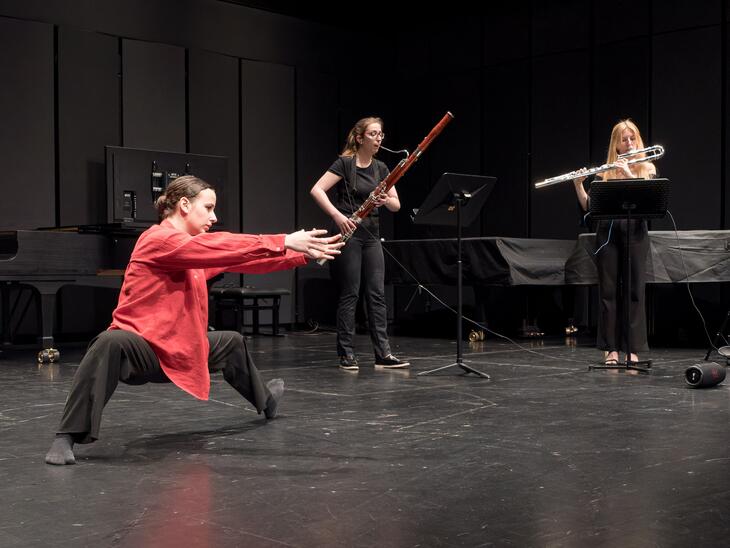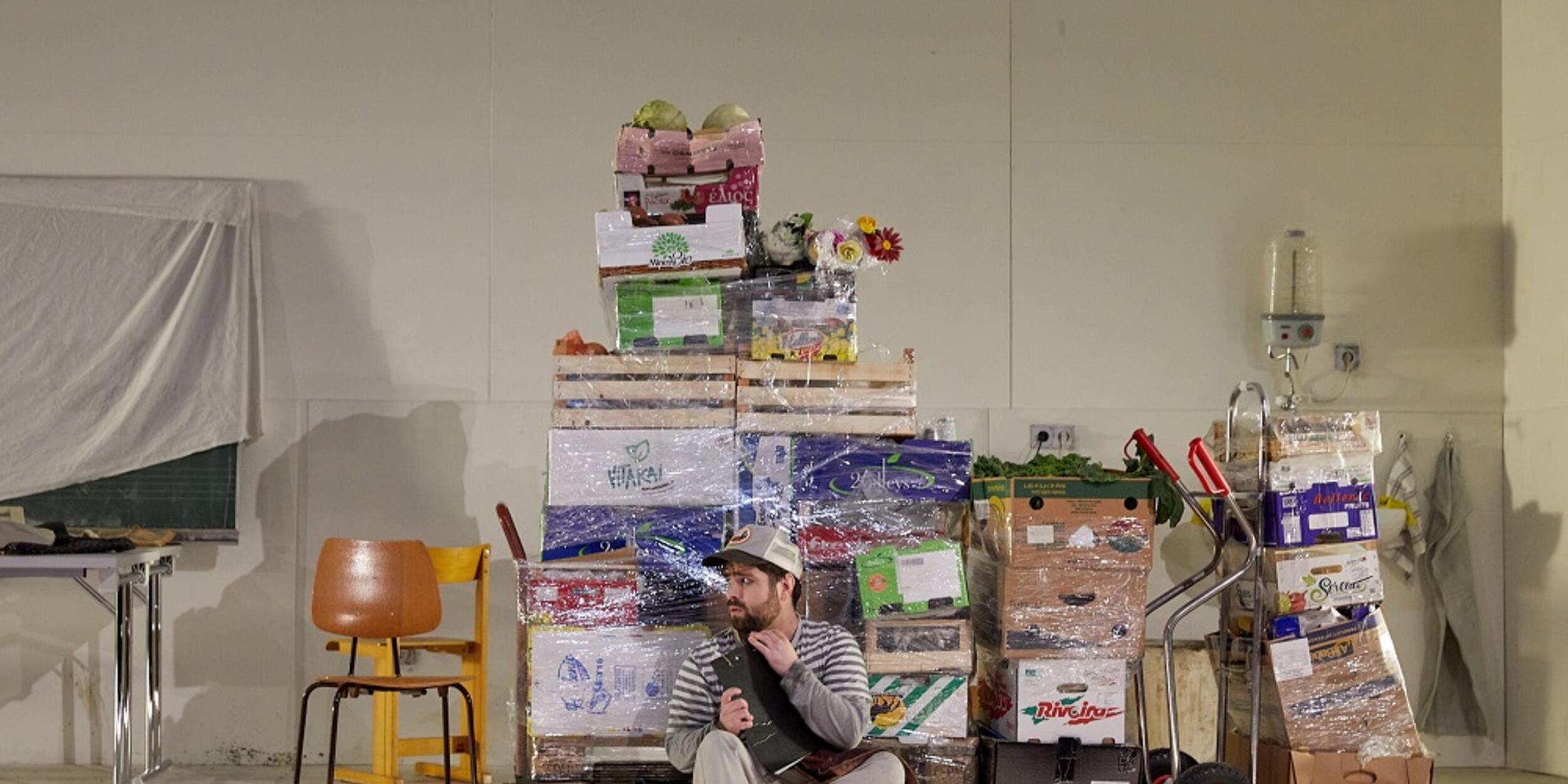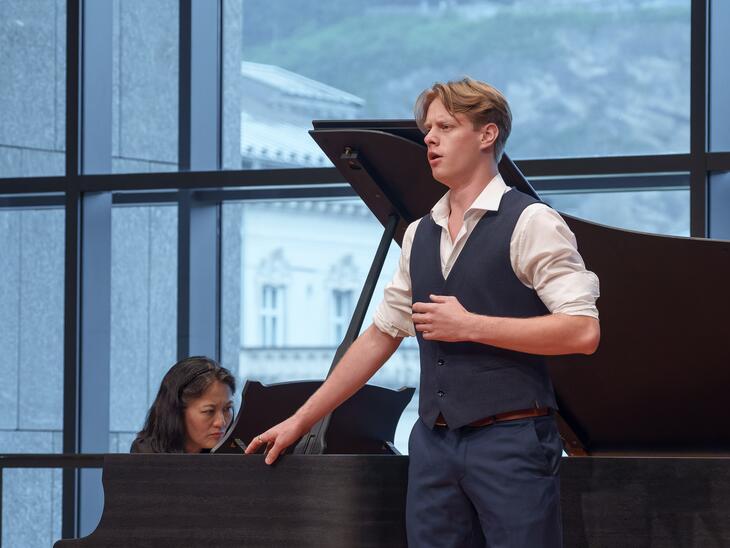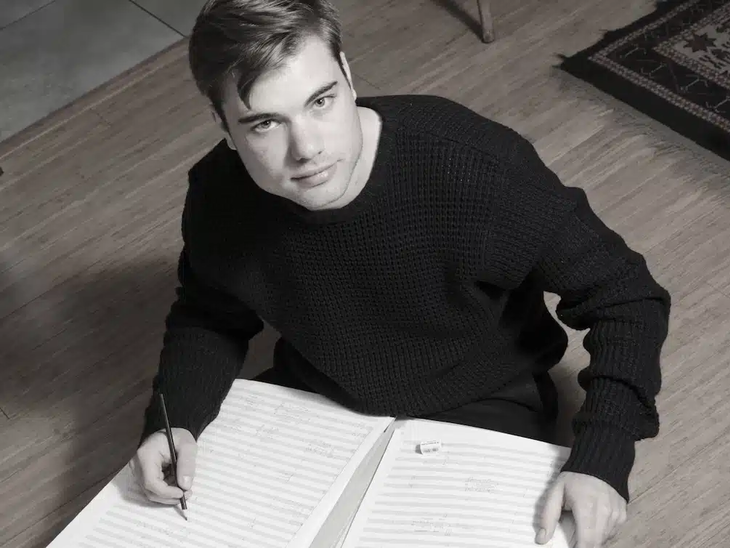"Who will be able to unravel the terrible struggle between the good and the evil in the soul of the Young Rose, the fierce attack of the devil, his wiles, his temptations that he threw into this timid heart? What images, what dreams did Satan invent to seize and corrupt this chosen one?" (Guy de Maupassant, Le Rosier de Madame Husson) This is the subject matter addressed by Yea Eun Hong, responsible for set and costume design in the production of Benjamin Britten's Albert Herring, to be experienced December 7-12 at the University Mozarteum Salzburg.
A look behind the scenes. It starts with reading the libretto, listening to a play and gathering atmospheric images. Even if it is not yet clear what is to happen with it. This is how we may imagine the beginning of work on an opera production in the area of stage and costume design. "I atmospherically immerse myself in the piece and force myself to draw a first draft. Preferably with pencil and watercolors. Sometimes I start with character analysis, other times with text analysis," says Yea Eun Hong. In Albert Herring, it is the characters' often unhealthy relationships with each other that are particularly interesting. "I want to use the stage design to tell the story in a way that the audience can take their own story from it and reflect on personal behavior in existing relationships," Hong explains. Designing a stage set is usually a long process. The hope that the first drawings and sketches, the first concept are a good basis, is often dashed. From her training, Hong has taken away the valuable advice not to be afraid of starting the design from scratch. Erasing is necessary and part of the process. Technically, Yea Eun Hong works both on paper and digitally: "I'm still searching for my final style and trying out many painting techniques and methods." As soon as the first drafts are completed, discussions with the director at Albert Herring follow with Alexander von Pfeil, with whom Hong has already collaborated several times. The various approaches will be discussed together.
The submission of the construction rehearsal plan is followed by the concept meeting, in which the elaborated stage and costume design is presented to the entire team. Now the scenic rehearsals begin, during which the concept idea takes on more and more form through the scenic and musical work. Props are partly tried out - partly discarded, and at the same time the technical staff builds the stage set. More and more details have to be worked out until everything comes together. That's what's so exciting about this work, Hong emphasizes. The first costume rehearsal marks the transition from conceptual work to craftsmanship. The craft follows the concept, "When I chose the costumes, I didn't know the singers yet. That was a deliberate step to focus on the roles," Hong says. Of course, the specific decision for fabrics and colors is still being tweaked and fit is still being considered. This goes from the underwear to the sock pattern of a particular character. In any case, the design of the set and costumes is a process that is in motion until shortly before the premiere. Hong tries to follow the rehearsals at all times so that he can observe everything closely. Through the stage directions and reactions of the singers, many impressions and ideas still emerge, for example, to track down missing props. Often it is small things like the number of nails in the walls. Close observation, even offstage, is therefore one of the set designer's core competencies. Hong calls it "perception with the entire body," that is, with all the senses. The goal, she says, is to create a stage that is filled with life.
After two to three months, the rehearsal framework can be worked with. Numerous helping hands are responsible for the implementation, most of which remain hidden from the audience. The trades include locksmithing, carpentry, lighting technology, video technology, sound technology and, last but not least, electrical engineering. Since the university's team is small, the assistant director also helps with the purchase of props and costumes or fabrics. Collaboration within the team is therefore very close and comprehensive - and it is precisely here that set and costume designer Yea Eun Hong also finds her fulfillment: "I was never completely satisfied with my work and always had the feeling that I had to do aspects even better or differently. So I was never finished. Sometimes I even had doubts that I had chosen the right profession. In the teamwork I find the necessary support, here the free space between my imagination and my technical skills fills. This is the most beautiful thing about my work!"
The challenge Hong faced in this piece is the timelessness of the material, which had to be created with simple, clear, almost neutral images. So that the characters could meet at any time in any place, but the opera's field of tension is still maintained for three hours. A white, almost brutally bright backdrop in which everything is mercilessly displayed. The stage design takes on two tasks here: For the singers, it should help them to find their way into the role as best as possible, to merge into it. For the audience, it should arouse curiosity and stimulate the imagination for several hours. Yea Eun Hong's stage design is an almost psychological approach to the piece. The story lies open like a mirror before the audience, which is subtly invited to find itself in it.
About the opera:
Guy de Maupassant's tragic-satirical tale was the plot for film adaptations with Fernandel and later Bourvil, among others, and was adapted for the opera stage in 1947 by Benjamin Britten and Eric Crozier under the title Albert Herring, whereby the place of action was moved from Normandy to the fictitious "Loxford" in East Suffolk. In the supposed guise of a comedy, Benjamin Britten tells the oppressive story of a mothered misfit in small-town provincial life: the outsider, ridiculed by all and subjected to sneers, receives the financially highly endowed "virtue prize", thus achieving fame and honors - but then runs away with his prize money and returns home an alcoholic wreck.
(First published in the Uni-Nachrichten / Salzburger Nachrichten on December 3, 2022)




